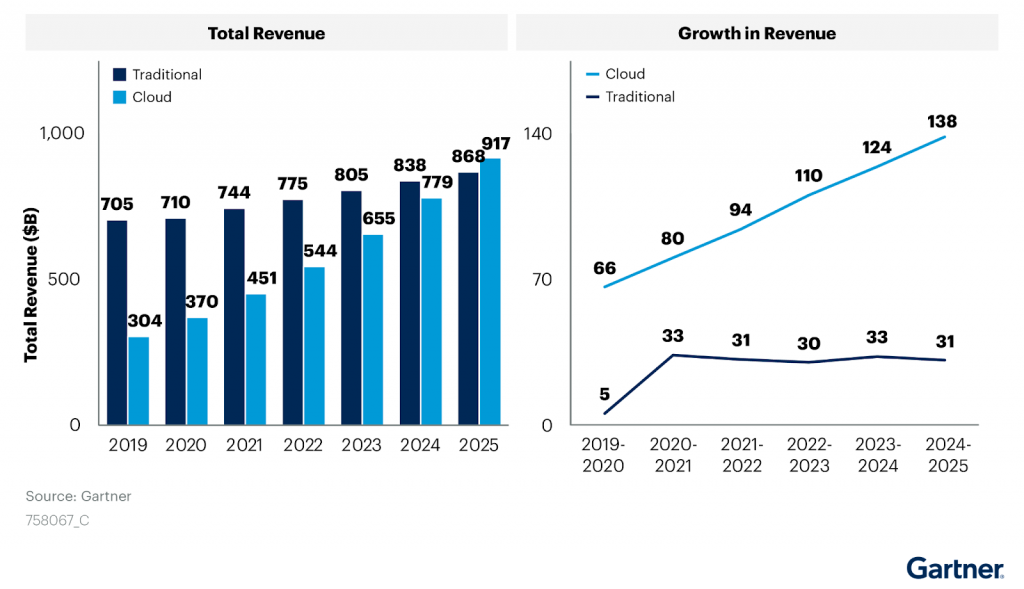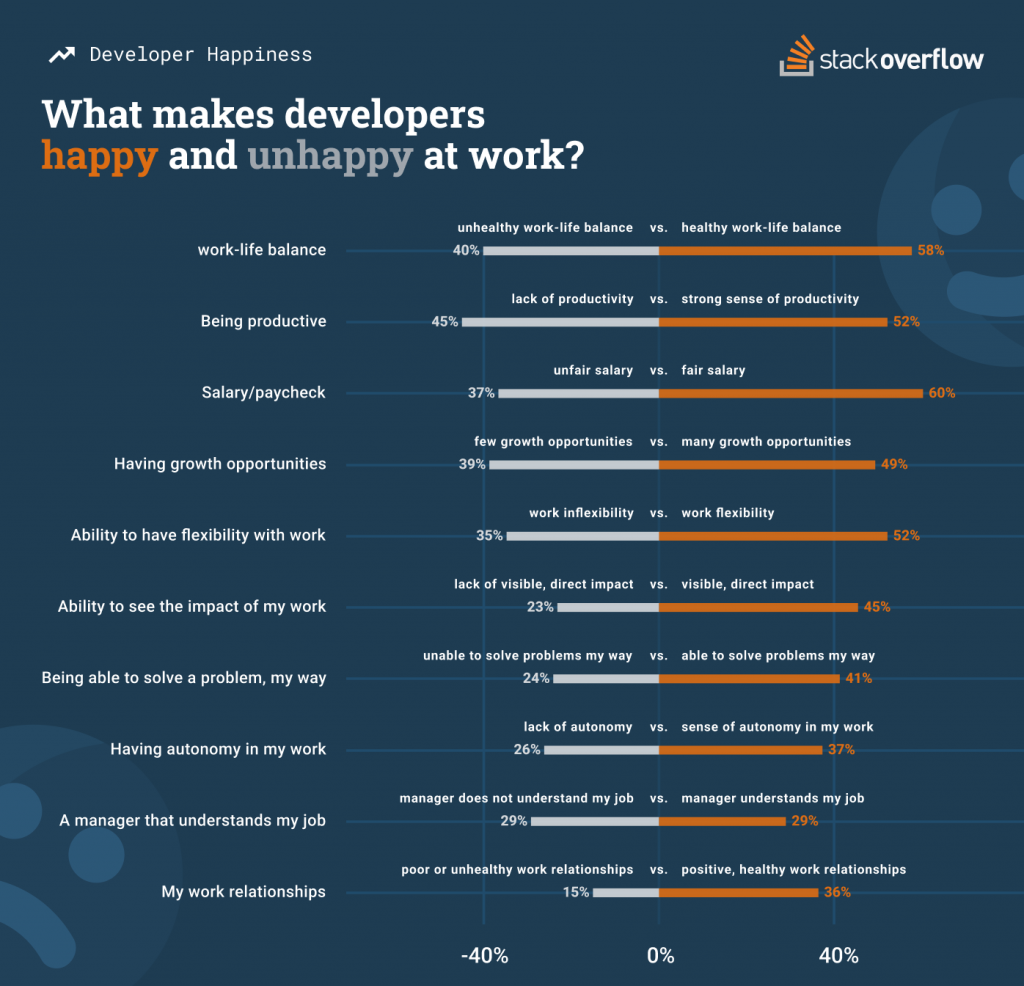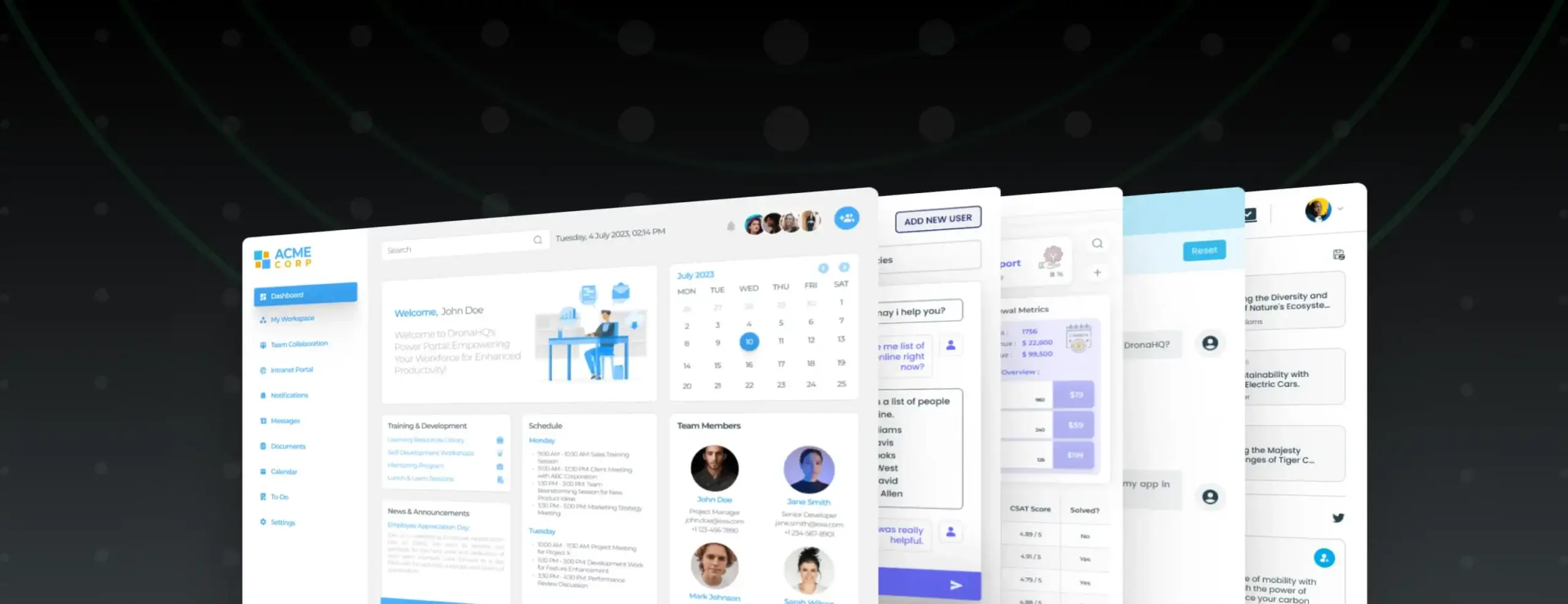

Challenges faced by CTOs of Fast Growing Companies in 2023
The role of CTO is getting increasingly demanding, and they need the best workforce, infrastructure, data management, and software to manage their business successfully. This article discusses the biggest CTO challenges high growth companies and startups have for 2022.
Introduction
The last few years have been providing a myriad of opportunities for high growth companies and startups to expand and adapt to the technological shifts happening in the world. We saw that every industry is going through a time of transformation—both strategic and technological. And CTOs are responsible for spearheading this change.
But, it has also been a period of great disruptions and challenges for even the most experienced and adept CTOs. The shifts have been huge and faster than anyone could have imagined or prepared for.
According to a survey, over 74% of global CTOs are expanding their roles to various allied-IT actions.
As 2022 begins, CTOs of high growth companies are gearing up for a new phase of challenges across cybersecurity, transformation, innovative tech stacks, recruitment, staying ahead of their competition, and venture capital funding.
Biggest Challenges for CTOs of High Growth Companies in 2022
Growing Cybersecurity Threats and Data Privacy Concerns
According to DARKReading, companies suffered 50% more cyberattack attempts every week last year. Accenture’s Cost of Cybercrime Study says 43% of cyber attacks are aimed at small businesses, but only 14% are prepared to defend themselves.
And this is one of the greatest challenges that CTOs of high growth companies have right now.
Source: Check Point Software
As cyberspace has evolved and matured, CTOs’ role has become demanding due to its business damaging nature, which is constantly changing and becoming more sophisticated. Accordingly, the CTO needs to incorporate security in every technological aspect of their high growth company and ensure more robust security governance and operations.
Organizations increasingly connect their data and business systems to the internet to deliver value and grow revenue. This inherently exposes the business to many threats and massive entry points to defend. Additionally, companies need to combat insider threats from employees, partners, and suppliers. The CTO can enforce a governance protocol that thoroughly validates technologies used and ensures that they take a security-first approach, where inherently less secure technologies become obsolete within the organization.
Having an experienced team working to protect the business from such threats completely could be a great way for CTOs to concentrate.
However, CTOs can also help create a culture that prioritizes security as the responsibility of the whole company instead of the IT department alone. This requires analyzing security risks at different levels and including everyone in the organization about the necessity of following the company’s security protocols.
Adopting Cloud Computing
Cloud computing has become an integral aspect of carrying out business operations worldwide. It is efficient, reliable, safe, and all-in-one revolutionary. Many businesses that have shifted to a cloud infrastructure environment have already experienced how incredibly value-adding the entire technology is.
Source: Gartner
Traditionally, the CIOs and CTOs selected software and deployed them. The team had to accept what the companies offered them.
But thanks to the cloud, consumerization, and mobile technology all working together, business teams now feel more empowered to pick what they want.
Let’s understand with an example.
Suppose a company’s IT team is not moving fast enough. In this case, other departments tend to go online to find a quicker solution. But then the CTO and his team are left to figure out how to manage these new demands, monitor, maintain the user-provided infrastructure, and mitigate the risks involved.
So, what is challenging about cloud adoption for CTOs is how they can transform their business into a sustainable and secure one using cloud infrastructure.
This is the real challenge. By adopting cloud technologies to deliver better services to customers, there cannot be any latency in your organization, either.
Developing Data-Driven Decision-Making
Regardless of any industry, one of the most reckless decisions a CTO can make is to ignore the dynamism of data in terms of tight feedback loops with the customers, developers, and leadership. We’ve all heard about how the leading global companies like Google, Tesla, and Meta leverage user data for making even the most minuscule decisions.
According to a report, 57% of companies say effective decision-making is the most notable benefit of data analytics.
For instance, a company plans to embark into a new market or launch a new product. The best way for a CTO’s leadership to move forward with minimal risk is to analyze consumer data trends.
Of course, being data-centric means more than investing in the latest innovative technologies that facilitate the collection and analysis of vital data. But mostly, it means decrypting those metrics into valuable insights and concrete action plans.
Reinventing Legacy Systems with Cutting-Edge Technology
The lack of a streamlined approach is why most businesses have a highly complex enterprise technology infrastructure. The only way a CTO can address such challenges is to collaborate with the CIO to plan the IT infrastructure development by keeping future business requirements in mind.
The tricky part of digital transformation isn’t technology but the speed and transition to sustain it, especially in uncertain times, says Aref Matin, CTO at Wiley.
Since some teams have started working in-office, digitization of data and business processes is the driving force to support this shift. The rapid transition to hybrid working has brought on the pressing need to create new workflows and implementation systems, illustrating just how agile internal tools need to be today.
And to deliver cutting-edge solutions at speed, modern CIOs need to modernize and prioritize work streams, enabling new workflows, agile development practices, and softwares that streamline business processes.
CTOs/CIOs need to refocus team efforts on establishing rules and a governance framework so that the increasing number of distributed teams can develop and implement new capabilities in a way that is aligned with enterprise rules and requirements. The tech leaders also need to ensure that the non-tech workforce doesn’t invite shadow IT risks.
Therefore, CTOs’ and CIOs’ interest in low code remains high. They are looking to reinvent the legacy systems to manage decentralized teams. It means looking for solutions that help bring visibility to workloads and standardization to the development process by timely release of new apps and products. Low code platforms that can integrate with existing enterprise systems or APIs, provide centralized access to data, and enterprise-ready security give CIOs and their staff better management and control.
Dealing with Security Policies and Compliance Audits
All businesses and their CTOs/CIOs need to be especially mindful of the regulatory bodies and compliance requirements specific to their industry. These audits ensure that the company follows the regulatory guidelines and drives all technology-related decisions. The best to register them step by step before a request for a mandatory audit comes in. Because any failure to maintain compliance can result in hefty fines and/or legal action. This responsibility often falls on the CTO/CIO, and it is no easy job to maintain compliance across an enterprise.
Technical Debt Caused by Increasing Pressure to Deliver ROI
There is no doubt that companies expect their CTOs to help their tech-related projects to bring excellent ROIs. It is the returns that make every venture capitalist want to invest. And CTOs need to create strategies and plans that can help the project bring better ROIs than their competitors.
The challenge is when you’re asked to deliver solutions faster with the same resources, quality often suffers. You’re cutting corners in some way or the other to meet deadlines. Creating bespoke or absolutely custom solutions for each problem. Most importantly, you’re creating technical debt.
Technical debt can evoke consequences like losing customers because of poor user experience, making the product more vulnerable and less performant, and increasing development costs.
Managing technical debt has always been a hurdle for the CTOs to get past. They need to determine both the cause and a strategy of action, and CTOs that are aware of the consequences of debt, look for answers to these questions.
Building a Good Developer Experience
Most founding CTOs and CIOs come from a software development background—being a hands-on developer with a breadth of experience, building an end-to-end solution and go-to-market with a functional MVP.
So how life treats a developer is very well-known to a CTO/CIO.
Source: Stackoverflow
A positive developer experience (DX) can bring numerous advantages to your business growth. If you want your product to succeed, developers’ satisfaction and happiness are very important. Happy developers create excellent software in the long run. If their working experience is positive, they feel secure and motivated to work. On the other hand, a poor DX may lead to a prolonged development process, leading to frustration for the developer, team, and ultimately the CTO.
In the last few years, more and more companies are starting to believe in a developer-focused approach. It is an accepted fact now that the CTO needs to be able to operate towards the enhancement of developer experience.
Fluctuations in Venture Capital Funding
Venture capitalists say that geopolitical tensions, inflation, foreseen interest rate hikes, and a seemingly never-ending pandemic are starting to affect the private markets.
Source: CNBC
The tech-heavy NASDAQ dropped 3.95% and hit a fresh low since the start of the year. Although those in the industry say deals are being made, valuations are coming off higher than last year. But some companies are reevaluating their fundraising efforts.
And this is not a piece of good news for the CTOs of fast growing companies as this will pose a threat to business scalability and expansion.
Deciding Between Type of Workforce—In-House or Outsource
CTOs face difficulties in finding the right talent fit for the business. They often struggle when it comes to hiring in-house or outsourced IT talent.
CTOs can make one of three decisions:
- Employ new talented developers, but there is always a shortage due to huge demand. Although companies are willing to spend exceptional remunerations on the IT team, the attrition rate makes it impossible to keep the talent in an organization because there will always be a company willing to offer them more.
- Boost the in-house efforts by bridging the gap of the mismatched skillset of the current staff. The skillset gap of the future is organizations seeking IT to fill the need for both interpersonal and technical skills. The CTO would need to upskill its workforce to use the latest technology and application and manage new infrastructure.
- Hire a dedicated outsourced IT team that constantly works with CTOs of growing startups; establishing a partner relationship can help engineering teams adapt to the changing industry trends. Scalability is the reason why high growth companies choose to outsource. It encourages them to stay flexible with any changes as they go. It allows them to hire more people or add resources depending on the market demand. And all this without creating a huge dent in the budget. But it has its own risks like communication barriers, code quality issues, or something more extensive, as shown in the movie “The Social Network.”
Either way, CTOs/CIOs should be well informed to make sound decisions for their teams because the need of the hour is developing a workforce of the next generation. Along with the type of workforce, CTO needs to understand which operations contribute to the company’s scalability because that will require a team that understands the industry and technology and can also drive significant results.
Emerging Hybrid Working Environment
This year, the biggest challenge is returning to the office as we slowly move beyond Covid-19. So it will be essential to create a workplace that is safe, fun, more comfortable, collaborative, and more attractive than a home office.
One pain point for the CTOs is the reliability of business tools both in the office and in employees’ homes. The challenges are keeping the right security in place, keeping up with employee motivation, and adapting to new technological policies. Companies need to keep them as a top priority to ensure productivity.
It is expected that 63% of the companies are adopting hybrid working because trust and collaboration are important for higher productivity. The companies that have invested in well-designed architecture for hybrid work environments will be better positioned than their competitors.
TCS CIO Abhijit Mazumder has designed a long-term hybrid workforce strategy named “25 by 25,” Only 25% of its employees will work out of Tata facilities by 2025.
“As we move forward, the focus is creating hybrid and flexible work models, enabling cross-domain collaboration, transforming employee experience, and continuous risk assessment when returning to the workplace,” says Abhijit.
Standing Out in a Crowded Market
Businesses are undergoing severe digital transformation, which can only be complemented by technological innovation. Today, CTOs’ challenges are to transform the current business models with the latest technologies and ideas.
The current business requirements hinder the transformative part of the business. Thus, leaders tend to ignore or delay the innovation process. Interestingly, a major roadblock is that 54% of leaders struggle to align innovation strategy with business strategy. Further, this decade has set the tone for change, and the only way to sustain any business is to invent, innovate and initiate.
The Digital Lead for PwC South Africa, Tielman Botha, says, “Innovation is a major part of the competitive equation for 21st-century businesses. The company’s capacity to create value through developing new customer experiences, products, services, business processes, and delivery models is one of the keys to profitability, growth, and survival.
CTOs should not only invest in physical resources, but also, tech leaders can take the help of their existing workforce to find how to improve the current business processes, tech stack approaches, and reach solutions that can contribute to the organization’s overall growth.
Conclusion
The role of a CTO has evolved to create personalized customer experiences that marketing or product teams would have once put together.
CTOs need not always discover innovation within the organization. They need to get new tools and services that can help them to foster innovation by allowing the company to deploy and scale the product quickly, according to the customer or internal team requirements.
The ideal approach would be to kickstart innovation that can help you initiate transformation that aligns with overall business goals. As CTOs, it is critical to set concrete goals to drive the business forward with innovative and transformational initiatives.
CTOs can diagnose the root cause of tech issues and create unique value propositions for their users. The understanding will help get close enough to the customers to deliver brilliant customer experiences that require access to great innovative technology—typically, something that the CTO can help provide.
The success of any high growth company will depend on how its CTO harnesses disruptions and brings in meaningful change. As the tech workforce becomes essential collaborators for problem-solving and innovation, CTOs’ / CIOs’ responsibilities will continue to change and grow within the enterprise.







